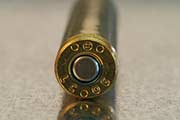I agree... I was just stating what Speer stated on the CUP and them using a semi-auto for the testing, the manual is 1979... things have changed since then. This manual doesn't "warn" on the concept of higher pressure they just say, "they are below 52,000 cup" or "62,000 psi" which is fine for any of the bolt guns I've used. I have a 1k Rem 700 .223 that I load for, using an 80gr Berger and Sierra, and believe me... I'm up there with the 5.56x45 with no problems, I'm not saying it can't happen to someone else, it's just my experience. I think the high-end SAAMI for the .223 is 55,000 cup The maximum pressure for 5.56x45 is about 63,000 PSI; the 5.56 proof load is 70,000 PSI. If I recall, SAAMI doesn't have specs for the 5.56x45 NATO, because it's NATO, and sometimes looking things up can become confusing between these two cartridges. I digress... the aforementioned is what Speer stated in #10 in 1979 Cheers
View attachment 337551View attachment 337553

